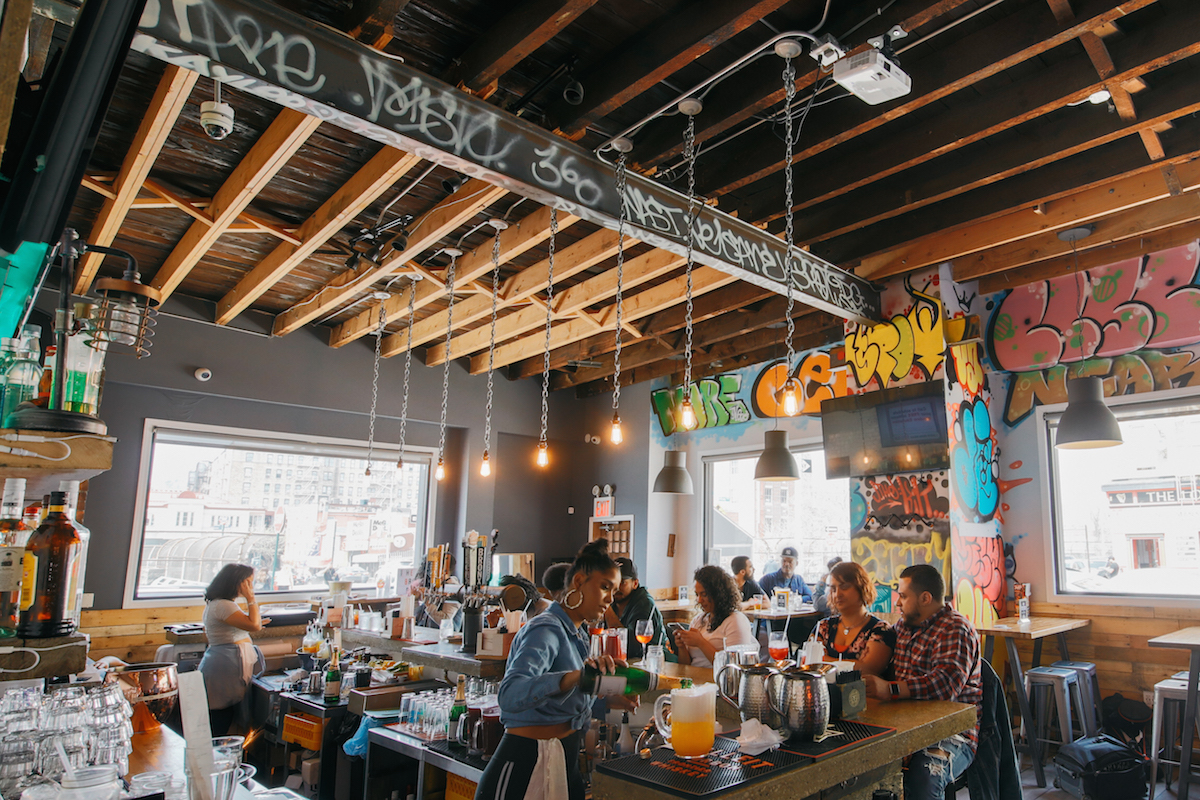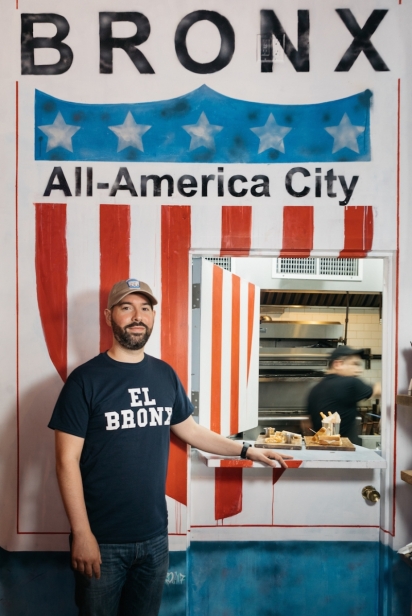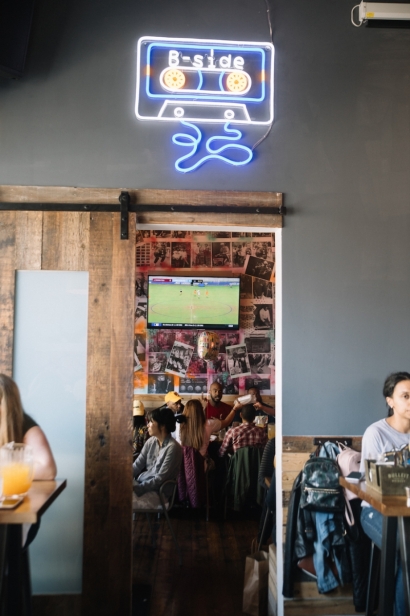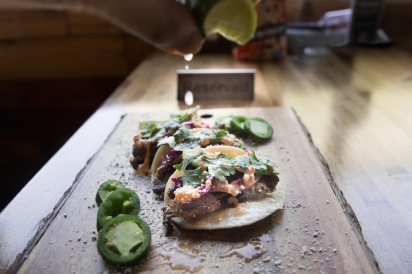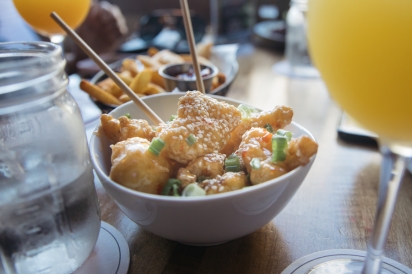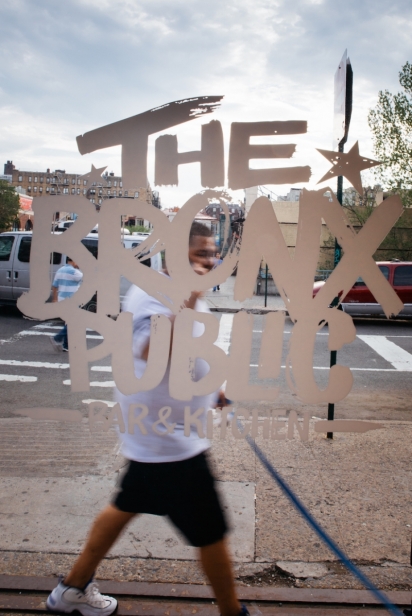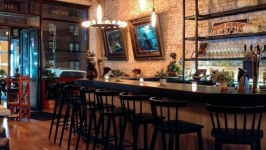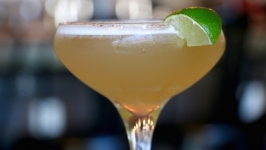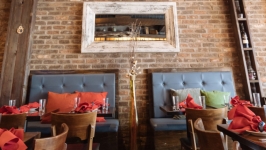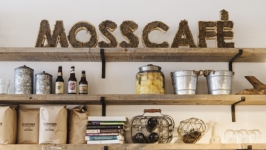The Bronx Public Serves Up a Side of Hip-Hop Nostalgia
Hip-hop and food are inextricably intertwined—from “T-bone steak, cheese eggs and Welch’s grape” mentioned in the Notorious B.I.G song Big Poppa to “I’m nice like beans and rice, I’m delicious” in the KRS-One song Mortal Thought, artists have used food as a filter to share personal stories. Even as their financial status and affinity for finer things increases, food provides a connection to their humble beginnings.
Step into The Bronx Public during their Sunday brunch seating and you immediately feel like you’ve been transported to a ’90s house party. The unlimited mimosas are flowing and tables of patrons rap along in unison to the Bronx’s own Big Pun in between bites of rosé donuts. Since its introduction, The Bronx Public has been catering to the Kingsbridge community by celebrating the borough’s greatest export: hip-hop.
“Hip-hop is part of the essence of the Bronx experience, so it’s only right that it’s part of what we do,” says Seth Kaplan, co-owner of The Bronx Public. “It’s a great way to bring people from different cultural backgrounds together. Music, specifically hip-hop, has the ability to do that.”
The restaurant opened in the summer of 2017, replacing Piper’s Kilt (also known for a short time as P&K Grille), a beloved but out- dated Irish watering hole that had been a neighborhood mainstay for decades. Originally, The Bronx Public opened as “The Kilt” to keep some of its former identity intact, but was then reinvented to better fit the community’s growing younger demographic. Seth grew up a short walk away and remembers having lunch with his family at Piper’s Kilt when it was serving the predominantly Irish community.
“I have some Irish heritage, but I’m not really Irish,” he says. “I’m Bronx. When people ask me, ‘Where’s your family from?’ I tell them my family is from the Bronx.”
When it came to renovating the restaurant, Seth looked to his childhood in New York for inspiration. Today, graffiti decorates the walls of the main dining area, much like it decorated most of the Bronx during hip-hop’s Golden Age, as well as a neon sign that reads “If it wasn’t for the Bronx” hanging in the back dining room next to a photo collage of old-school boom boxes.
“Music is a huge part of my life, and it’s been instrumental in shaping who I am. I can remember as early as kindergarten, walking down Fordham Road and seeing big gold rope chains. All the stores like Sammy’s and Dr. Jay’s would have speakers facing outward, bumping Big Daddy Kane and Run-DMC. I was exposed to that at a very young age, and it has absolutely been the soundtrack to my life.”
But how do you avoid alienating older generations, while still appealing to the newer crowd? In music, artists pay tribute to their influences by sampling songs from generations past. Similarly, for Seth and his crew, it’s all about celebrating the modern while paying homage to the past. Some of the original guests will recognize the light fixtures in the hallway that hung in the original entrance of Piper’s Kilt and the wooden floors used for the front face of the bar.
“We wanted to keep as much of the salvageable infrastructure as we could. There’s a lot of rich history here. People have been coming to this place for a very long time. It’s their place. We wanted to keep some of that. We don’t want to forget what it meant to them, and still means to myself and my partners, and the folks that supported us in the renovation.” Then there’s burgers and wings, which are considered some of the best in the borough. “What we found really quickly was that the people who appreciated the burgers and wings and had been coming here for decades couldn’t care less what it was called. As long as we didn’t change the burgers and the wings, we could have called it whatever we wanted.”
The updated food and drink menu boasts modern trends with subtle nods to the food culture that make up the city’s fabric. The duck wontons are appropriately packaged in wire- handle Chinese takeout boxes, and their fried golden brown bits of cauliflower coated in a sweet and spicy sauce is a more salubrious spin on General Tso’s chicken. And the plantain chips, a snack usually found in bodegas, are served with a side of mojo and pico.
When asked about the fine line between businesses paying homage or co-opting the culture for profit, Seth says it all comes down to being authentic and staying true to yourself. “I’m a white kid from the Bronx. I don’t care what race or religion you are. If you grew up listening to hip-hop in Nebraska and had to work harder than I did to seek it out, then you should be able to come to a place like Brooklyn or the Bronx and represent. People can tell when it’s inauthentic and if it’s someone trying to capitalize without knowing the culture.” (And if you’re not sure which category you fall in, you can put your knowledge to the test during their monthly hip-hop trivia nights hosted by Power 105.1 DJ L. Boogs.)
The Bronx Public looks to the past for inspiration, but the future is what really has them excited, as they continue to fine tune and tweak everything from the menu to the decor.
“Part of the mission was to create a space that wasn’t specific to one age or demographic, but representative of the Bronx and New York. We want an all-inclusive atmosphere,” says Seth.
This mission will really come to life when they revamp their menu for summer. “We’re going to have brunch bagel and lox with cream cheese and big NY-style pretzels. Things that you identify as New York staples, but reimagined in a way that’s a little more modern. We’re really excited to bring that New York experience to life.” And that’s music to our ears.
170 W 231st St, Bronx; Instagram.com/thebronxpublic


